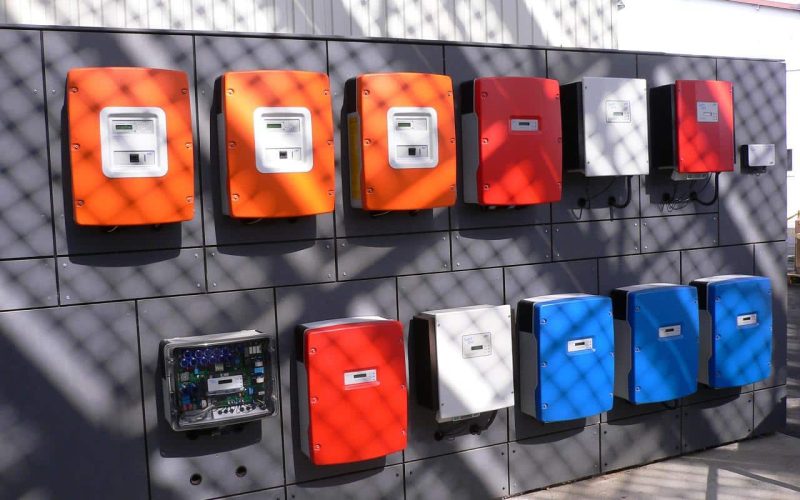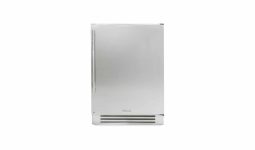People often see inverters in homes and offices. Inverter devices are widely available in malls and online stores.
Customers buy them because they are known for their energy efficiency.
However, the commercials, even the customer representatives, do not explain what the inverter does. So what does an investor do, and how does it work?
Today, almost all household appliances and other major electrical equipment and devices can be powered by an inverter.
An inverter is extremely useful as an emergency power backup unit in a power outage.
And if fully charged, you can still use your lights, TV, computer, kitchen appliances, power tools, and other electrical conveniences.
Of course, this will also depend on the type of inverter used, especially one designed or recommended to power a combination of equipment, fixtures, and high-power consumption appliances.
Description of an Inverter
An inverter is a compact rectangular piece shape of equipment that is usually powered by a combination of batteries connected in parallel or by a single 12V or 24V battery.
Automobile engines, gas generators, solar panels, or any other conventional power source can charge these batteries. Without further ado, let’s examine what an inverter does.
What Does an Inverter Do?
The inverter is an essential piece of equipment for the solar energy system. Inverters can also be called AC Drives or VFDs (Variable Frequency Drives).
These electronic devices can convert Direct Current (DC) from a battery to conventional Alternating Current (AC) power that you can use to run all kinds of devices.
Devices include electric lights, kitchen appliances, power tools, microwaves, televisions, computers, and radios.
Directly connect the inverter to the battery and your AC devices to the inverter, and you have portable power wherever and whenever you need it.
The inverter’s main function is to convert direct current (DC) to standard alternating current (AC).
While AC is the power supplied to industry and homes from the power grid or public utility, batteries in AC systems only store DC.
In addition, almost all appliances and other electrical equipment and accessories operate exclusively on alternating currents.
In DC (direct current), electricity is held at a constant voltage in one direction.
In AC (alternating current), current flows in both directions in a circuit as the voltage changes from positive to negative.
Inverters are just one example of a class of devices called power electronics that regulate the flow of electricity.
The inverter is also responsible for controlling the speed and torque of the electric motor.
Electric motors are found in most of our work devices, such as small electronics, transportation, and office equipment.
These motors need electricity to run. Matching the motor speed to the required process is essential to avoid wasting energy.
In factories, energy and material waste can endanger operations, which is why inverters control electric motors, increasing productivity and saving energy.
How Does An Inverter Work?
The inverter is powered by a 12-volt battery (preferably deep cycle) or multiple batteries connected in parallel.
The battery will need to be recharged as the inverter draws power from it. It can be charged by running a gas generator, automobile motor, solar panel, or wind turbine.
Alternatively, you can use a battery charger connected to an AC outlet to charge the battery.
The AC drive works between the power source and the electric motor; power enters and regulates the AC drive. Then, the regulated power is sent to the motor.
The AC drive consists of a rectifier unit, a DC intermediate circuit, and an inverse conversion circuit.
The rectifier unit inside the AC drive can be bidirectional or unidirectional.
The latter can accelerate the number of revolutions and run the motor by taking energy from the electrical network, while the bidirectional rectifier can take mechanical rotational energy from the motor and return it to the electrical system.
The DC circuit stores the electrical power that the inverse converter unit uses.
Before the motor receives the regulated power, it undergoes a process inside the AC drive.
Input power is sent to the rectifier, and AC voltage is converted to DC voltage.
The DC intermediate circuit smoothes the DC voltage. It then passes through an inverse conversion circuit to convert the DC voltage back to AC voltage.
This process allows the AC drive to adjust the frequency and voltage supplied to the motor according to the process requirements.
The motor speed increases when the output voltage has a higher frequency.
This means that the motor speed can be controlled via the operator interface.
The first inverters, made in the 19th century, were mechanical. A rotary motor, for example, would continuously switch whether the DC source was connected forward or reverse.
Transistor-based electrical switches and solid-state devices with no moving parts have recently been used.
Transistors are produced from semiconductor materials such as gallium arsenide or silicon.
They control the flow of electricity in response to external electrical signals.
If you have a solar home system, your inverter performs several functions.
In addition to converting your solar power to AC power, it can monitor the system and provide a portal to communicate with computer networks.
Solar and battery storage systems rely on advanced inverters that, if designed to do so, operate without grid support in the event of an outage.
Different Types of Inverters
There are two main types of power inverters: “true sine wave” inverters (also called “pure sine wave”) and “modified sine wave” inverters (also called “modified square wave”).
True sine wave inverters were being developed to replicate or even improve the quality of power supplied by the mains of the power grid or power utility.
They are particularly recommended for powering energy-intensive devices and electronic equipment.
True sine wave inverters are more costly than modified sine wave inverters, but they are the more powerful and efficient options.
Compared to that, modified sine wave inverters are much cheaper.
They can power a small or limited number of appliances and accessories, such as kitchen appliances, lamps, and small power tools.
However, this type of inverter may not be able to power energy-intensive equipment and appliances such as computers, microwave ovens, air conditioners, heaters, and laser printers.
General Advantages and Disadvantages Of Inverters
Now that we know what an inverter does and how it works, let’s examine its pros and cons.
Advantages
- It can be an energy-efficient way to change the voltage.
- You can step up or step down the voltage tension.
- During a power outage or similar, it can stabilize the voltage.
- Longer backup time means it can help you during a long power outage
- It can provide electrical isolation between input and output.
- It can provide AC voltage from a DC source.
- You can smooth out random variations in the input voltage.
- It can produce 50Hz from a 60Hz supply or vice versa.
Disadvantages
- It requires rectification and smoothing of the output if the output is to be DC.
- It may produce radio interference or audible tones.
- It can produce alternating current at a non-specific frequency.
- On some types of UPS, the inverter may need to be phase-synchronized to the incoming AC voltage to ensure spike-free switching.
- It can produce excessive output voltage under no or very light load conditions.
Conclusion
Businesses and regular consumers are looking for means of energy savings.
This has promoted the development of inverters in standard household machinery and appliances.
Inverters are hidden and stored in rooms with adequate ventilation. However, they play an essential role in energy saving.
The ability to precisely control office devices on demand can significantly reduce energy consumption and waste production.








